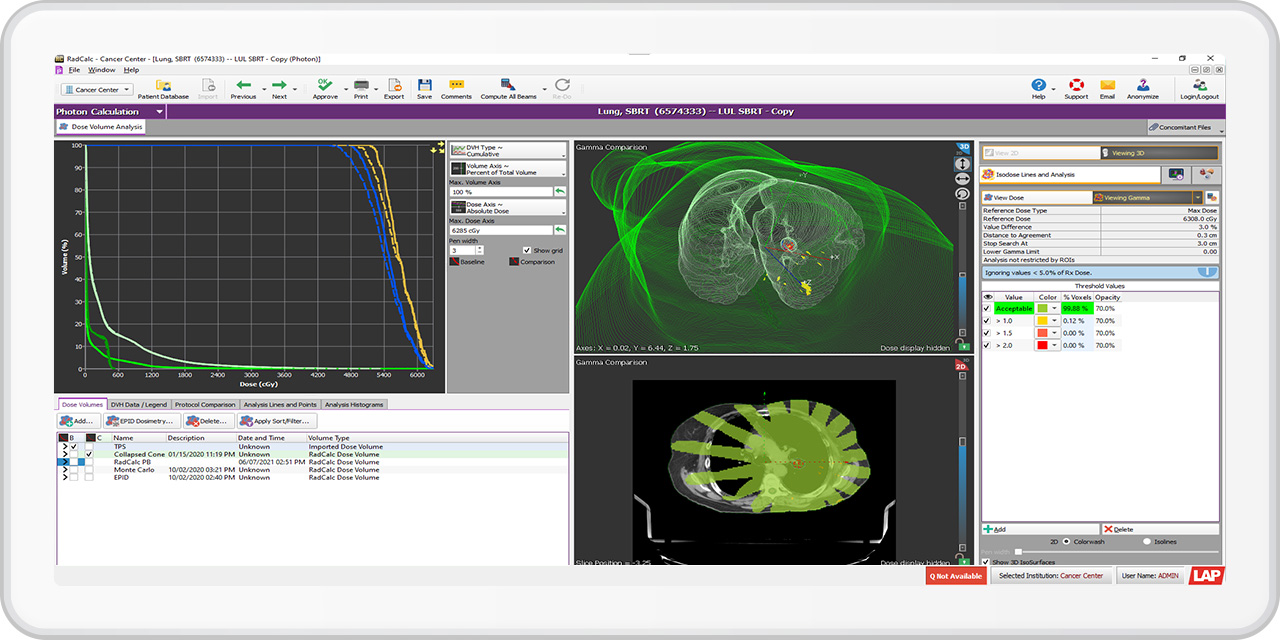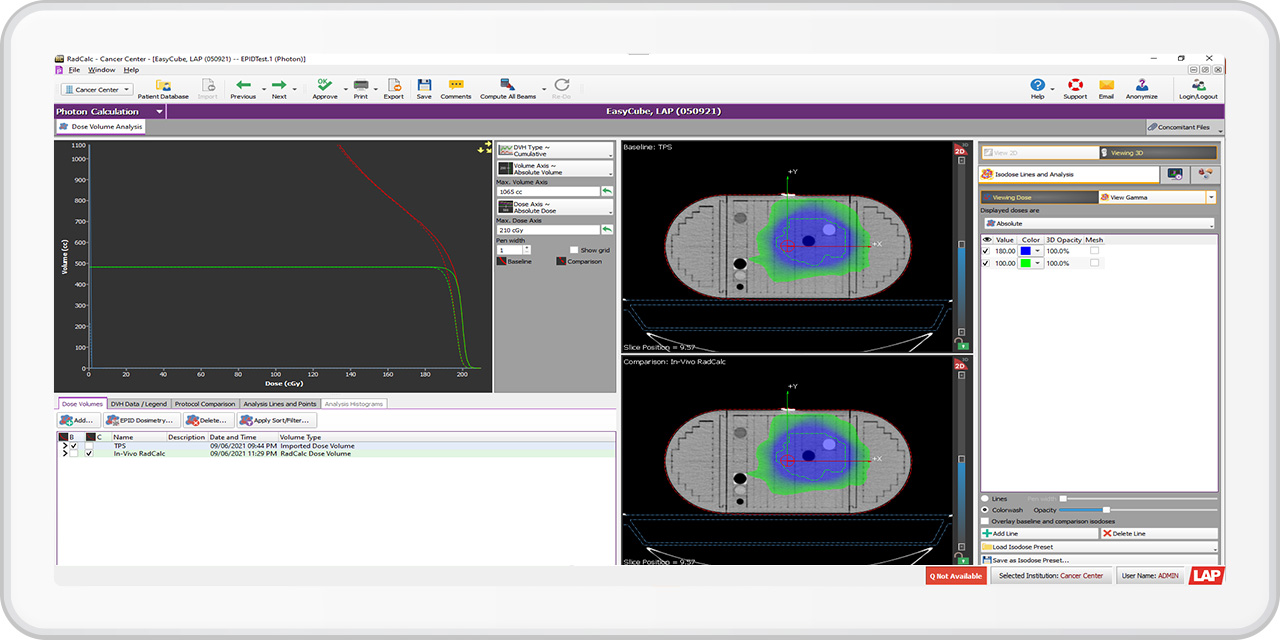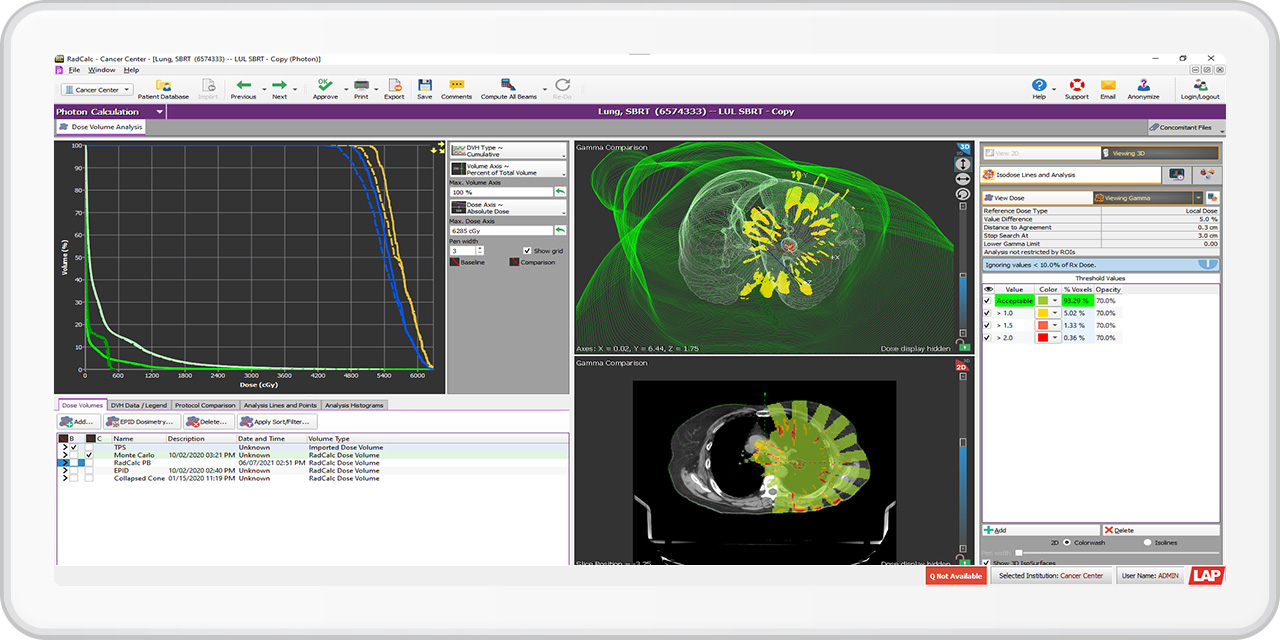How 3D patient QA highlights uncertainties and catches errors
The field of radiotherapy has been progressing at a tremendous rate over the last couple of decades, leading to more complex treatments with higher doses, sharper gradients, and reduced margins. A greater complexity demands a commitment to better methods of patient specific quality assurance. Find out more and read the corresponding article which was originally published in the Autum Edition of EMP News by European Federation of Organizations For Medical Physics – EFOMP.
Collapsed Cone
Collapsed Cone Superposition algorithms have been the most commonly used in treatment planning systems for nearly a quarter century and is the most trusted model based dose calculation algorithm.
The Collapsed Cone dose computation process involves computing the incident fluence with a 1mm resolution. The computation is sped up by the use of polyenergetic dose kernels optimized at a depth of 10 cm from a weighted fit of monoenergetic PDD curves, along with a set of beam hardening factors to account for spectrum changes with depth. The TERMA is determined using the same 1mm resolution of the incident fluence. Electron contamination parameters are added into the calculation during the dose computation process. The energy deposited into a given location in the dose grid is determined by 256 collapsed cones, which is then summed to determine the final dose for each voxel within the volume.
EPID based pre-treatment and in-vivo dosimetry
RadCalc’s EPID for pre-treatment and in-vivo workflows allows for the reconstruction of 3D dose in the patients’ anatomy for any IMRT and VMAT plans.
Using the acquired EPID images, RadCalc calculates the dose to the patient CT dataset allowing a full 3D dose comparison to the TPS. This provides a very accurate evaluation of the intended vs delivered dose.
“RadCalc’s EPID is seamlessly integrated into the clinical workflow. It provides accurate and fast pre-treatment and in-vivo patient verification.”
Introducing RadCalc's EPID module
Find out more
Monte Carlo
Monte Carlo is widely considered to be the gold standard in terms of dose accuracy and our goal is to build confidence in the most uncertain planned doses.
The RadCalc Monte Carlo module utilizes an automated beam commissioning process in conjunction with the users measured data to produce a customized beam model. Standard beam geometries can easily be reviewed and analyzed within the same simple user interface during the commissioning process.
Modern day Monte Carlo methods benefit from more affordable computing power and powerful variance reduction techniques. These techniques are used to reduce calculation times. One such technique is directional bremsstrahlung splitting which involves only transporting photons that will contribute to the useful radiation field. The variance reduction methodologies employed by RadCalc minimize the time to compute dose while maintaining unparalleled accuracy. RadCalc’s Monte Carlo algorithm offers benefits in the dose volume calculation for small heterogeneous cases, as well as highly modulated plans with large dose gradients where sparing normal healthy tissues can be more critical.
What is RadCalc’s fast Monte Carlo?
RadCalc’s new fast Monte Carlo algorithm improves on speed, reducing computation times by a factor of six, without sacrificing the high level of precision unique to Monte Carlo simulations. The previous BEAMnrc implementation is used to create precomputed electron tracks, containing the recorded energy, position, direction and interaction of the electron at each step. Each precomputed track is stored in a look-up table on the calculation engine for quick selection in a manner that is recyclable for every patient, reducing the overall time needed to compute a radiotherapy plan. This process can be broken into many concurrent parts allowing for the use of GPUs, which further speeds up the simulation. Whether you’re working with complex geometries or simple water phantoms, this algorithm allows you to verify even the most intricate treatment plans quickly.
For electron plans, the BEAMnrc modeling of machine characteristics and the process for performing calculations were complicated, expensive and time consuming. The precomputed track technology in fMC reduces the required resources to provide access to a standalone eMC solution globally, only requiring an NVIDIA GPU with more than 12GBs of RAM.
The need for using a Monte Carlo-based QA software
In this video Marc-André Renaud (Medical Physicist at McGill University, Montreal) gives a little insight from a scientific perspective on the need of using a Monte Carlo algorithm in quality assurance.
"This work is the result of over 20 years of expertise in application of MC simulations in radiotherapy.
Marc-André Renaud
Medical Physicist at McGill University, Montreal







